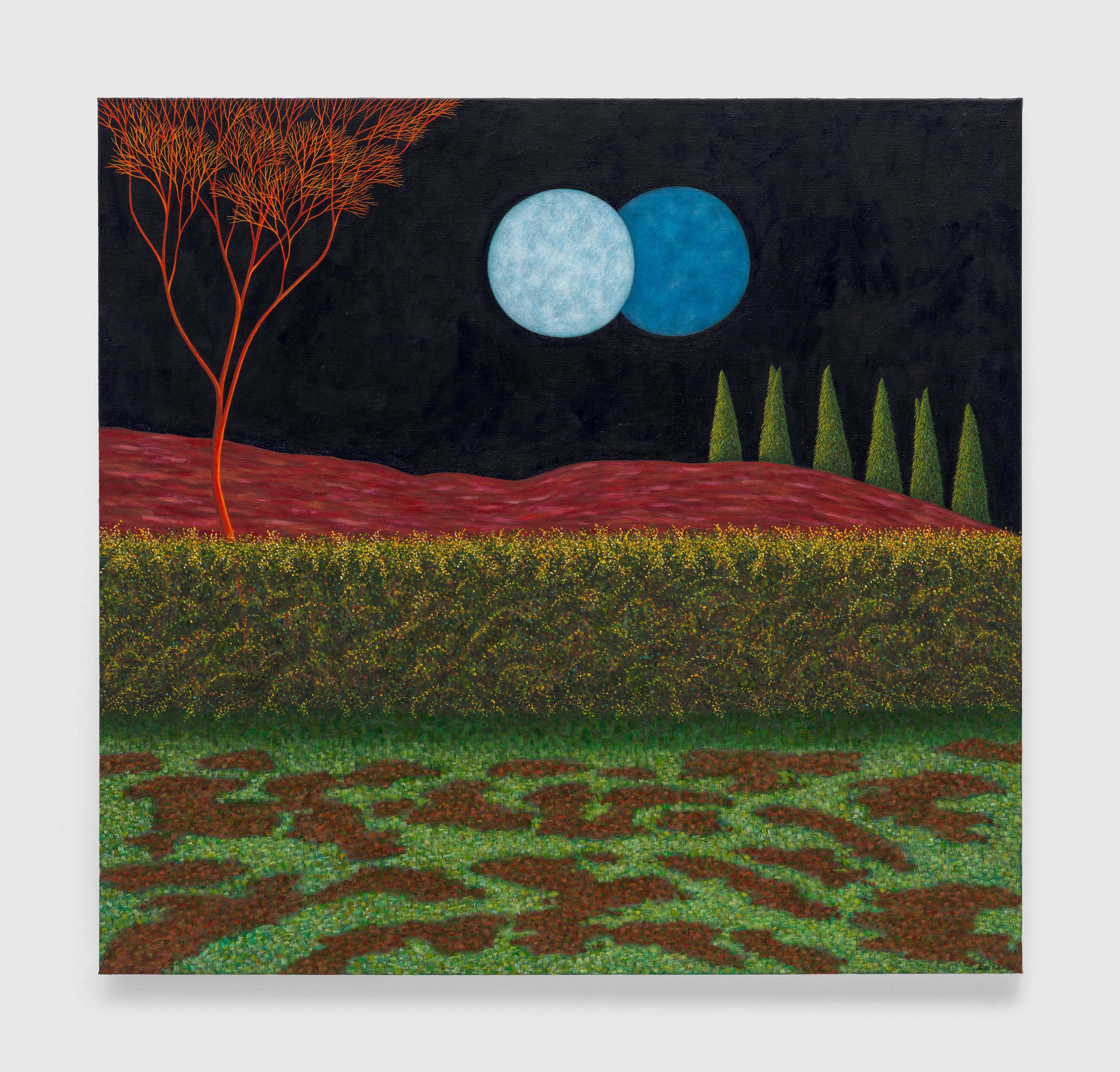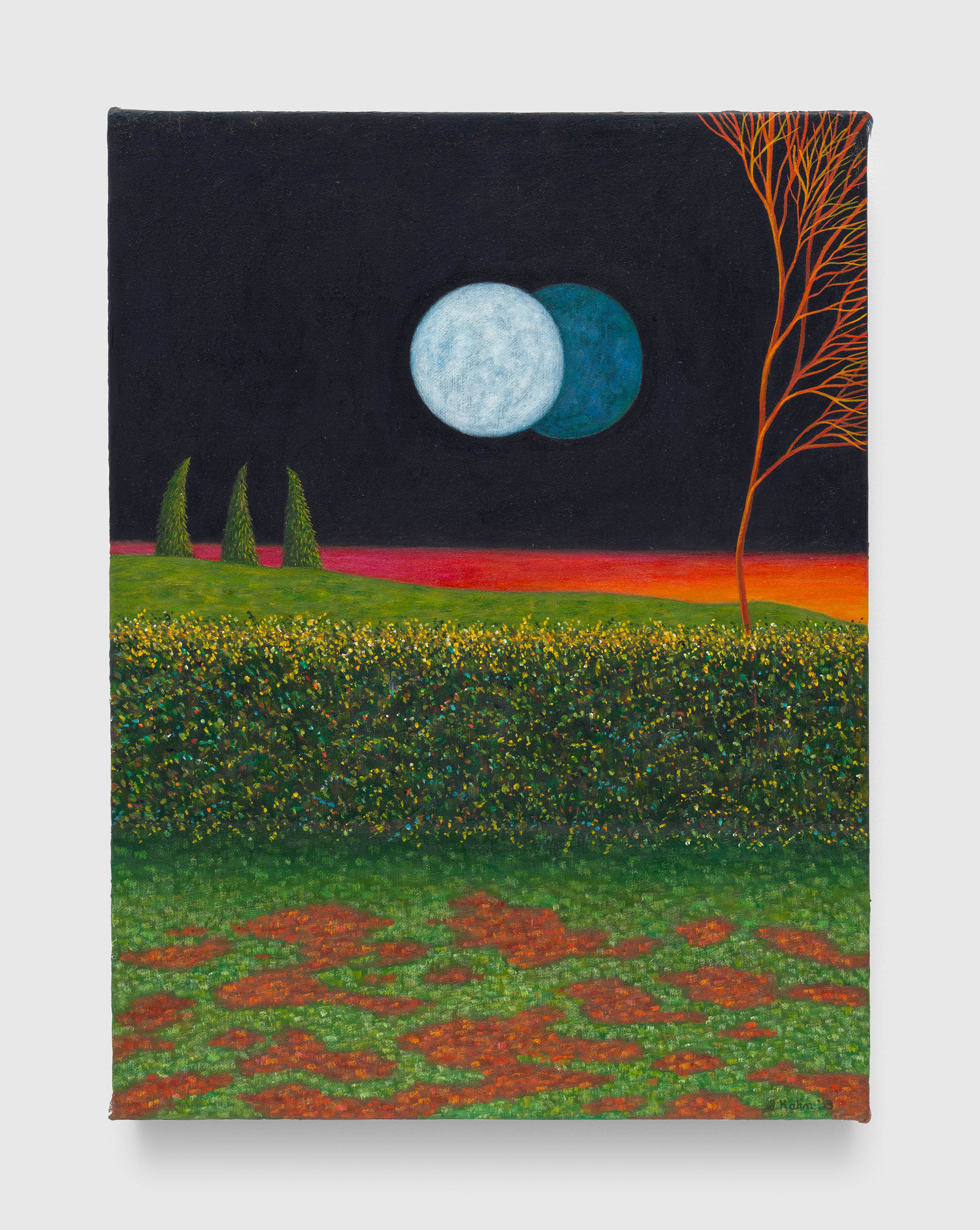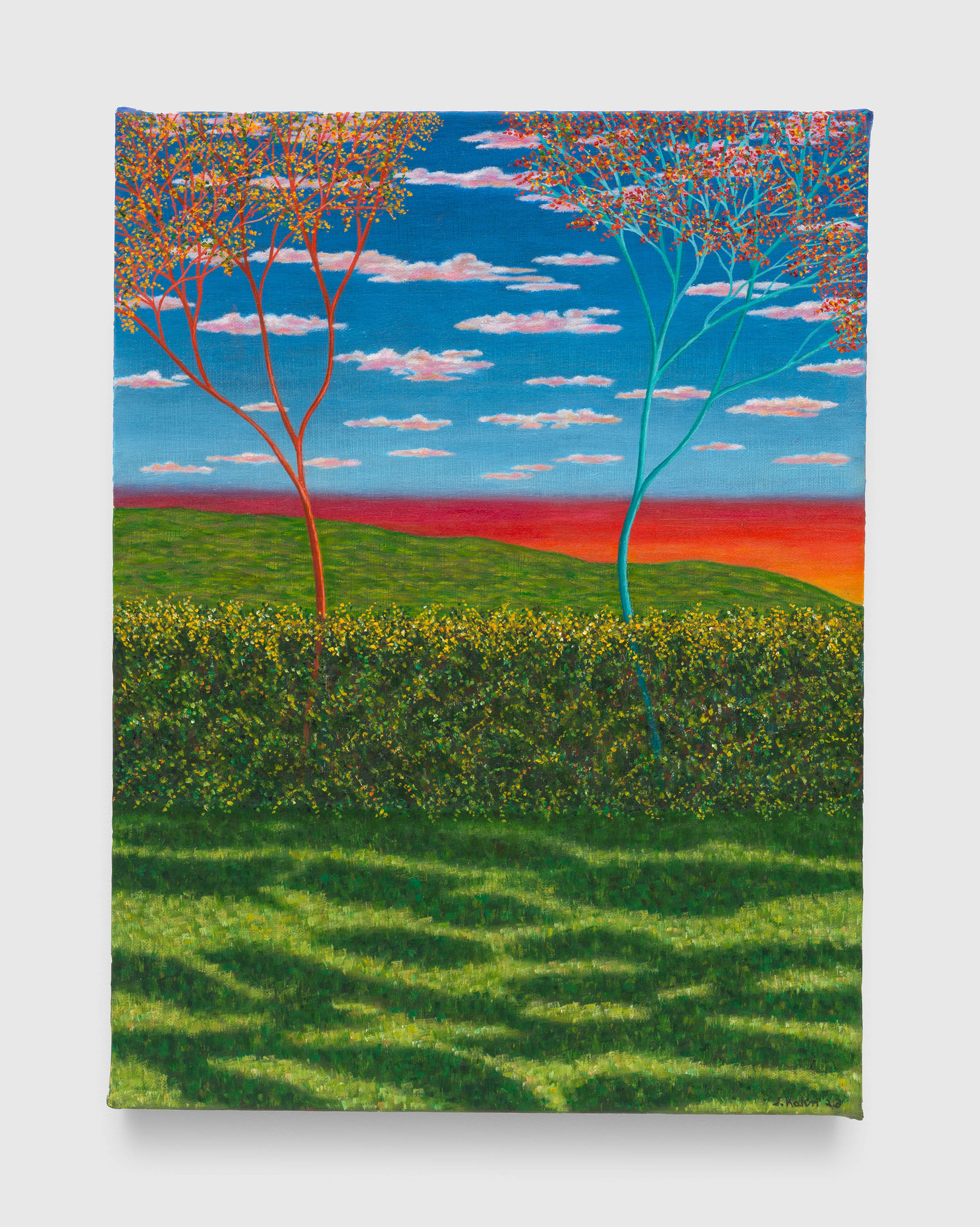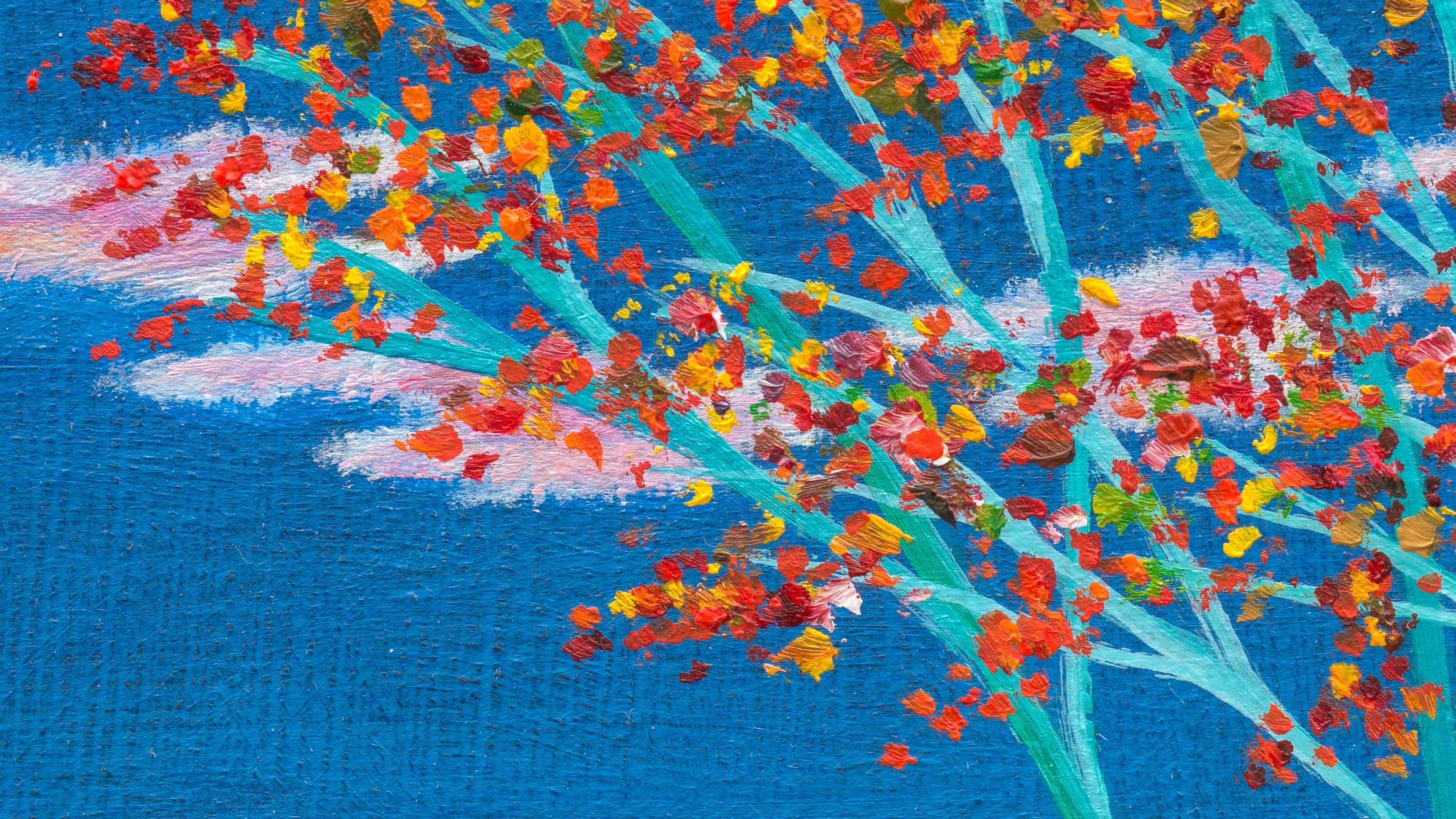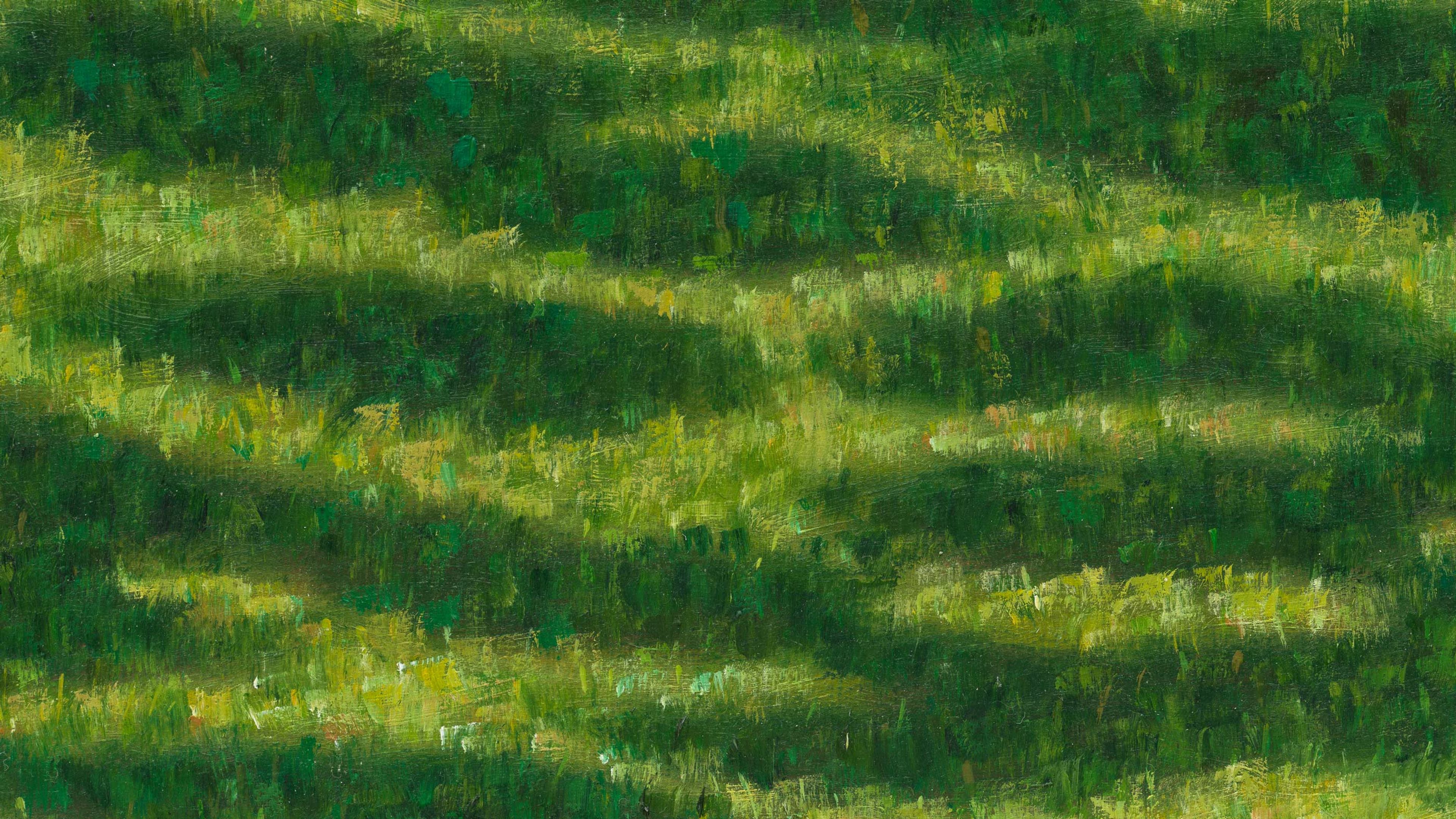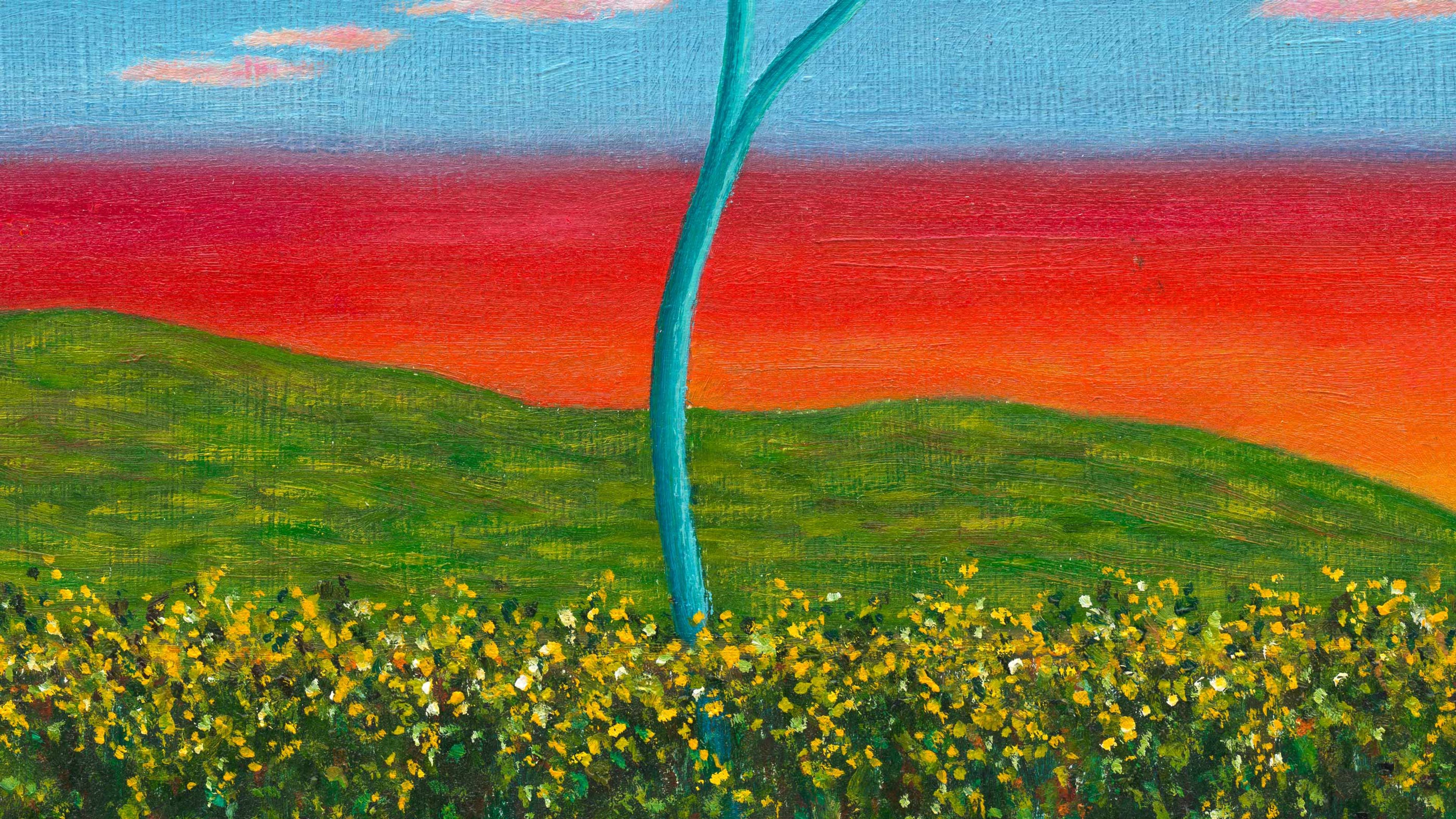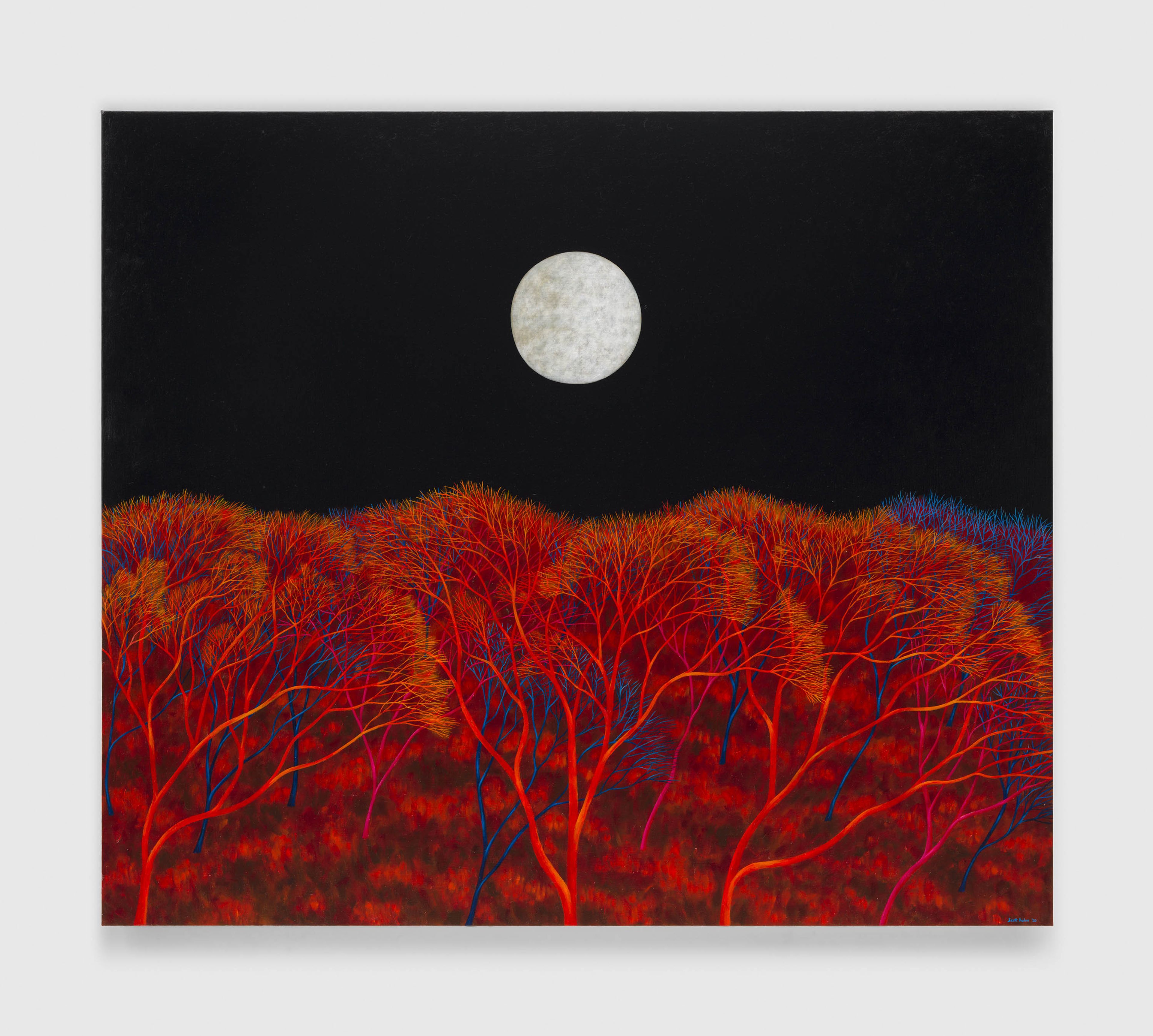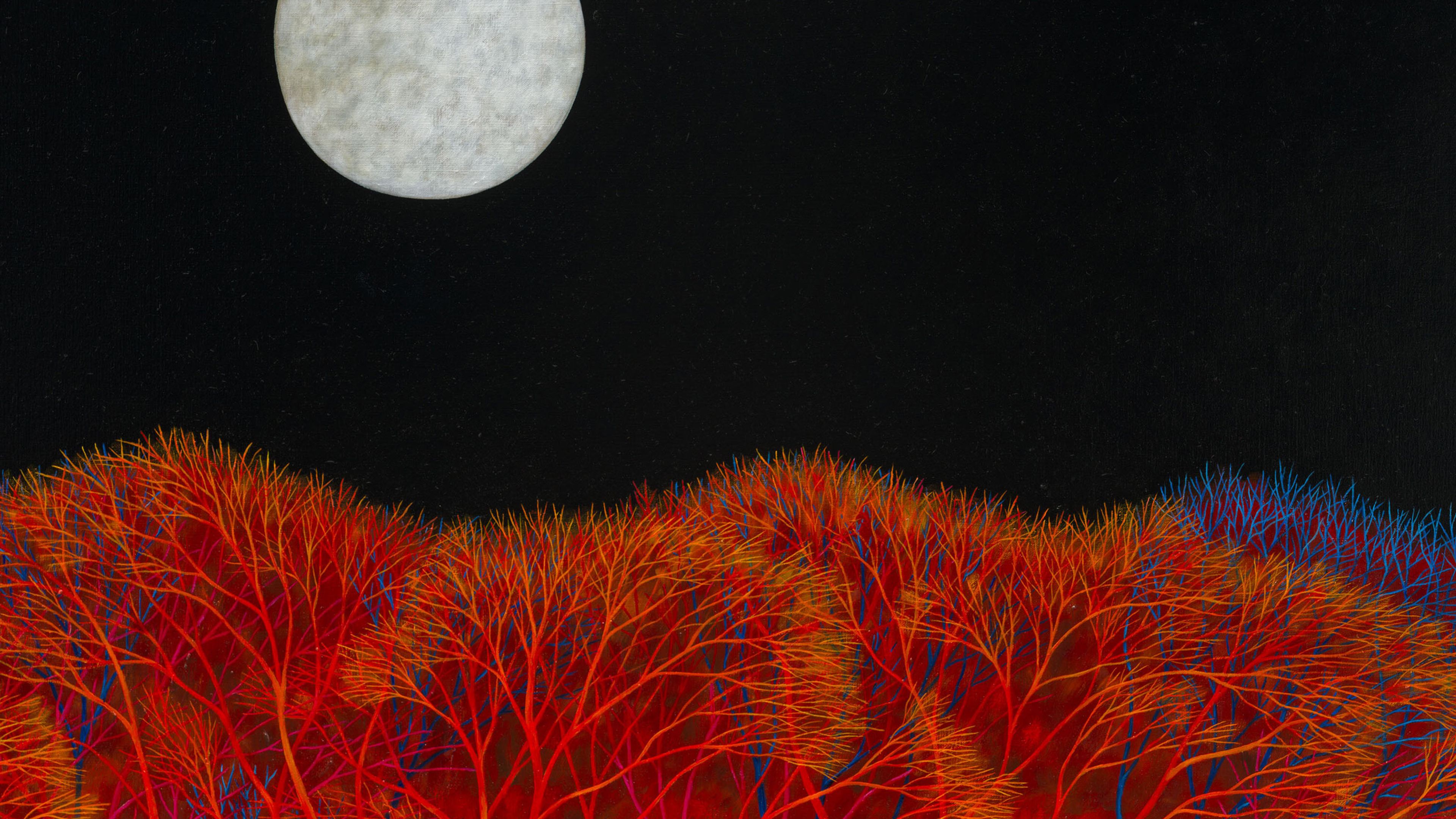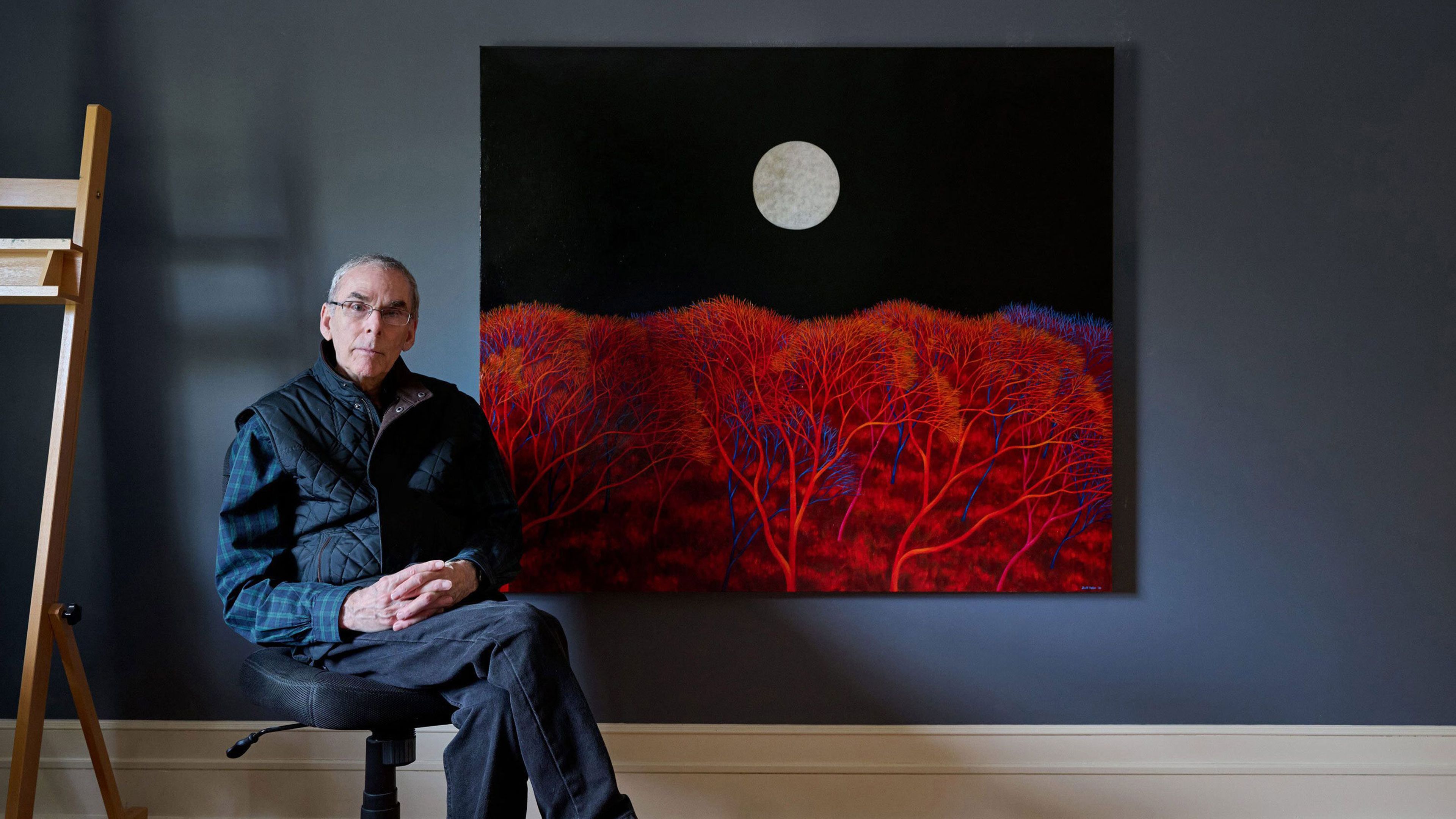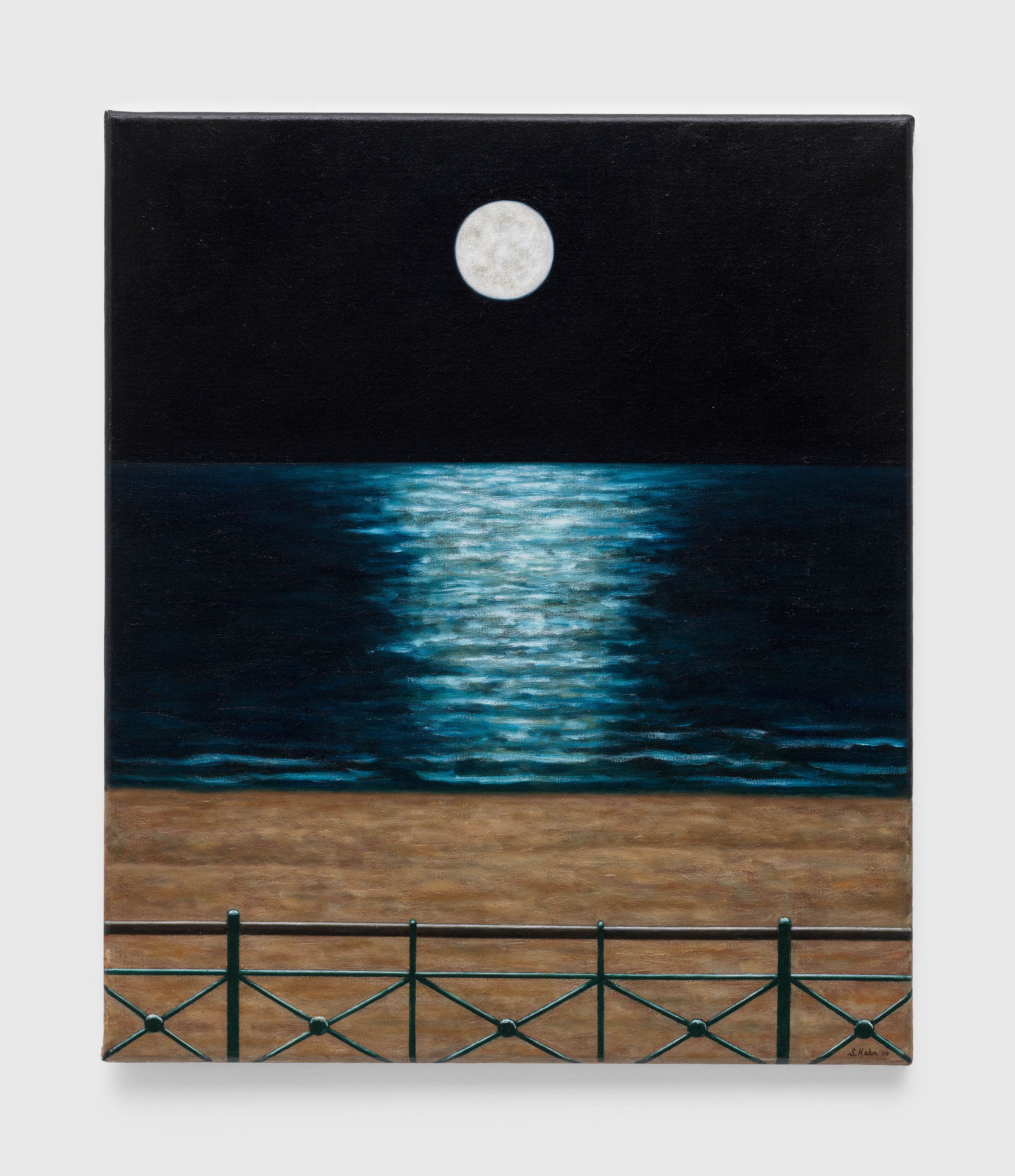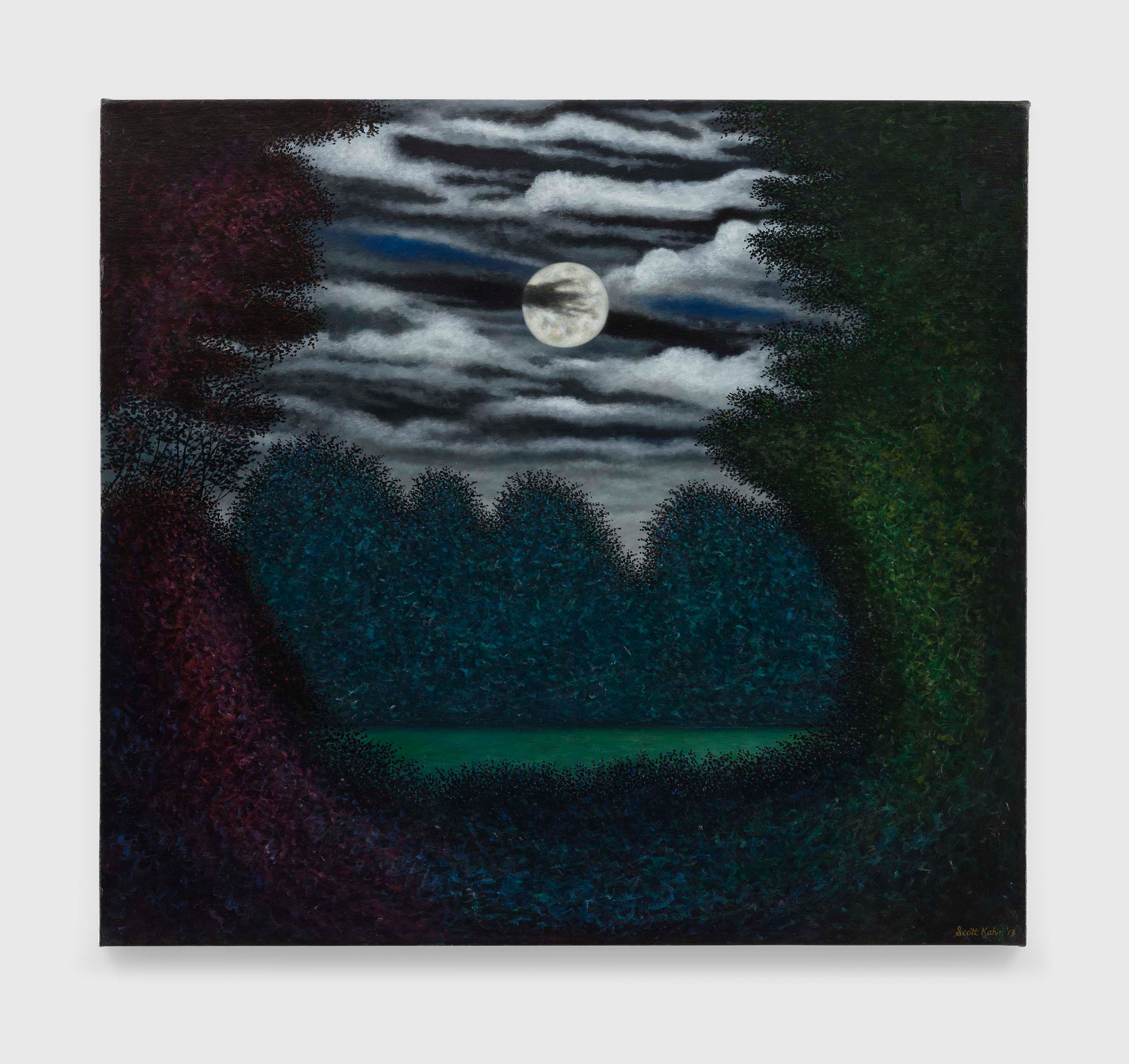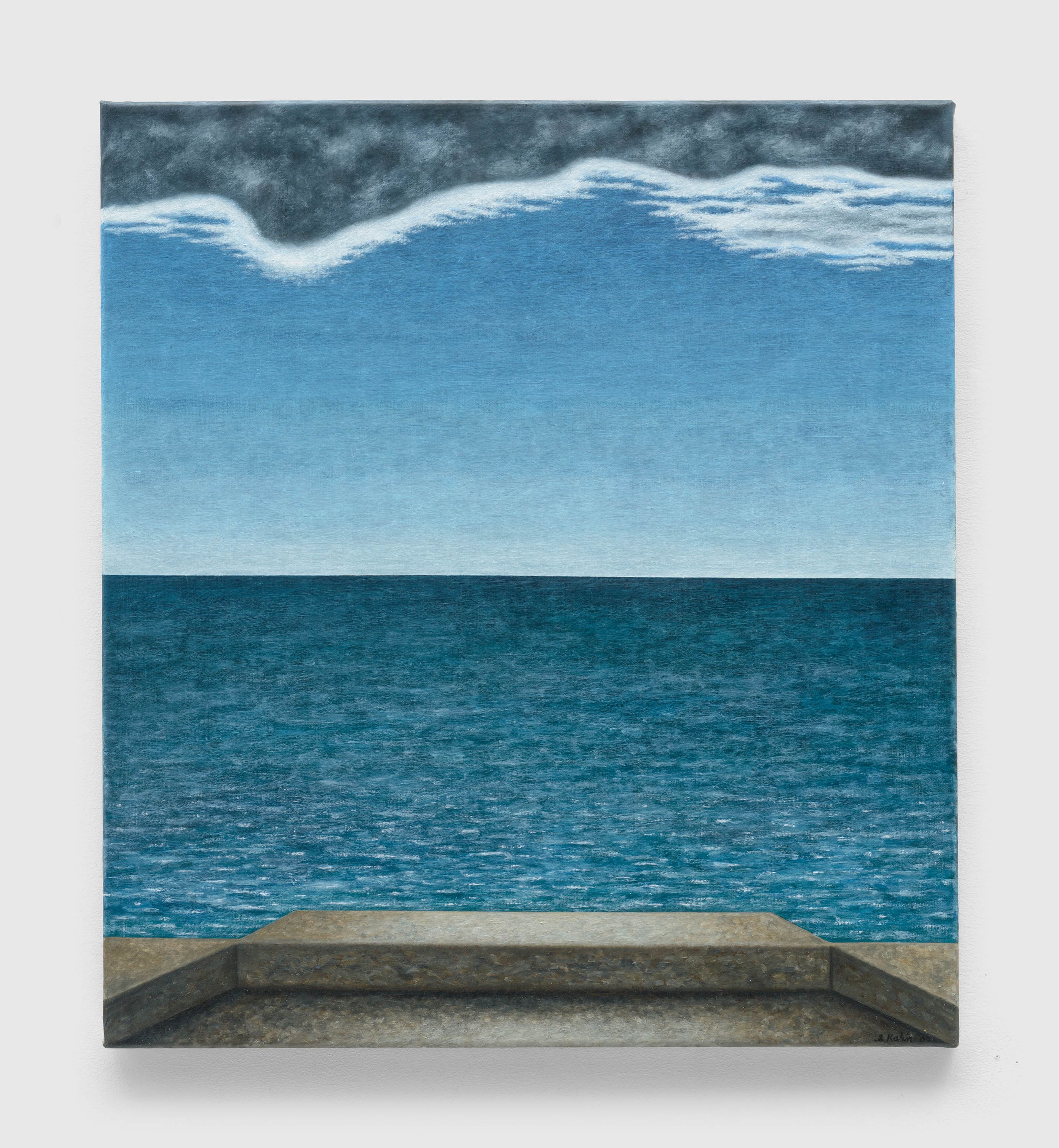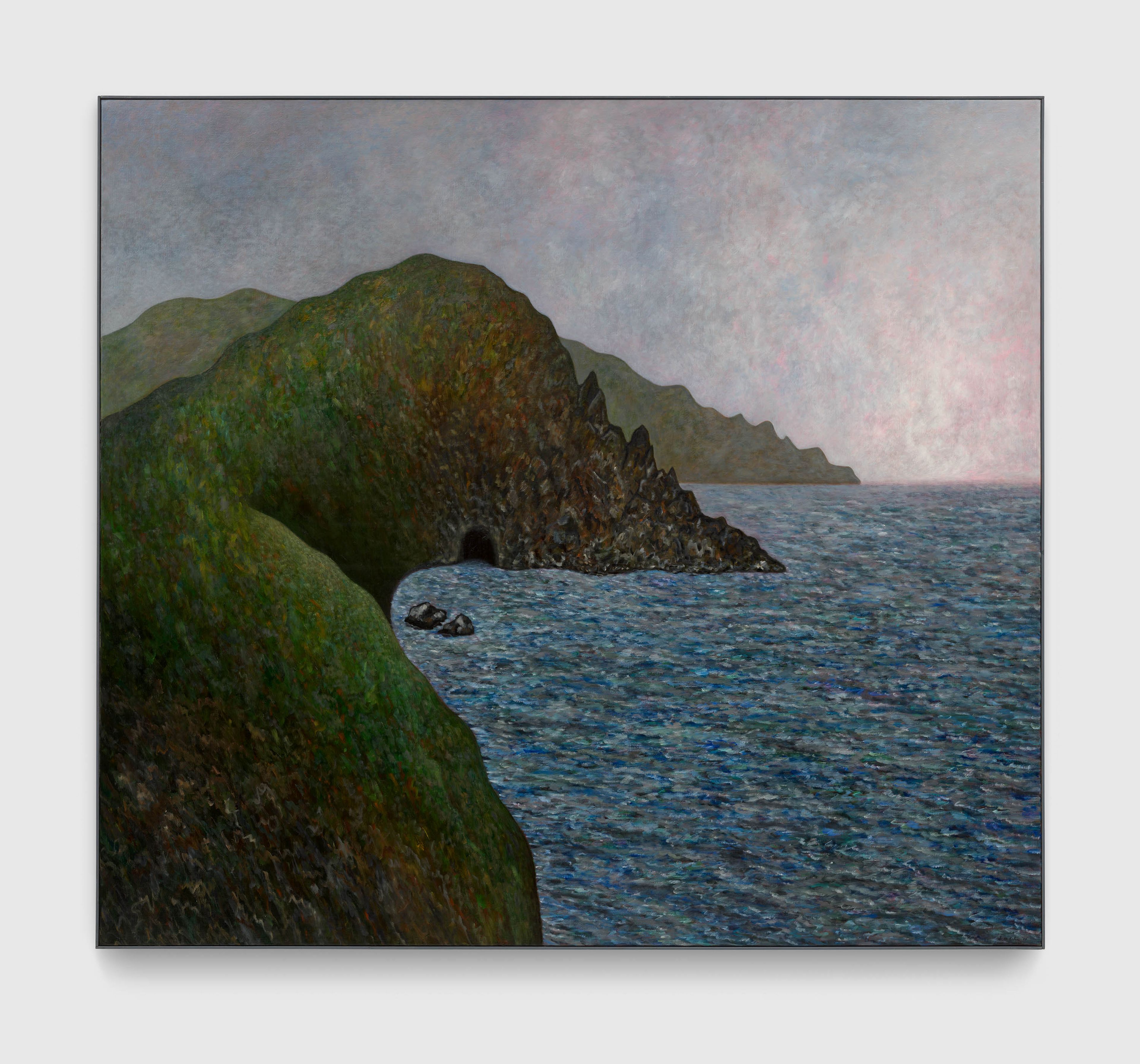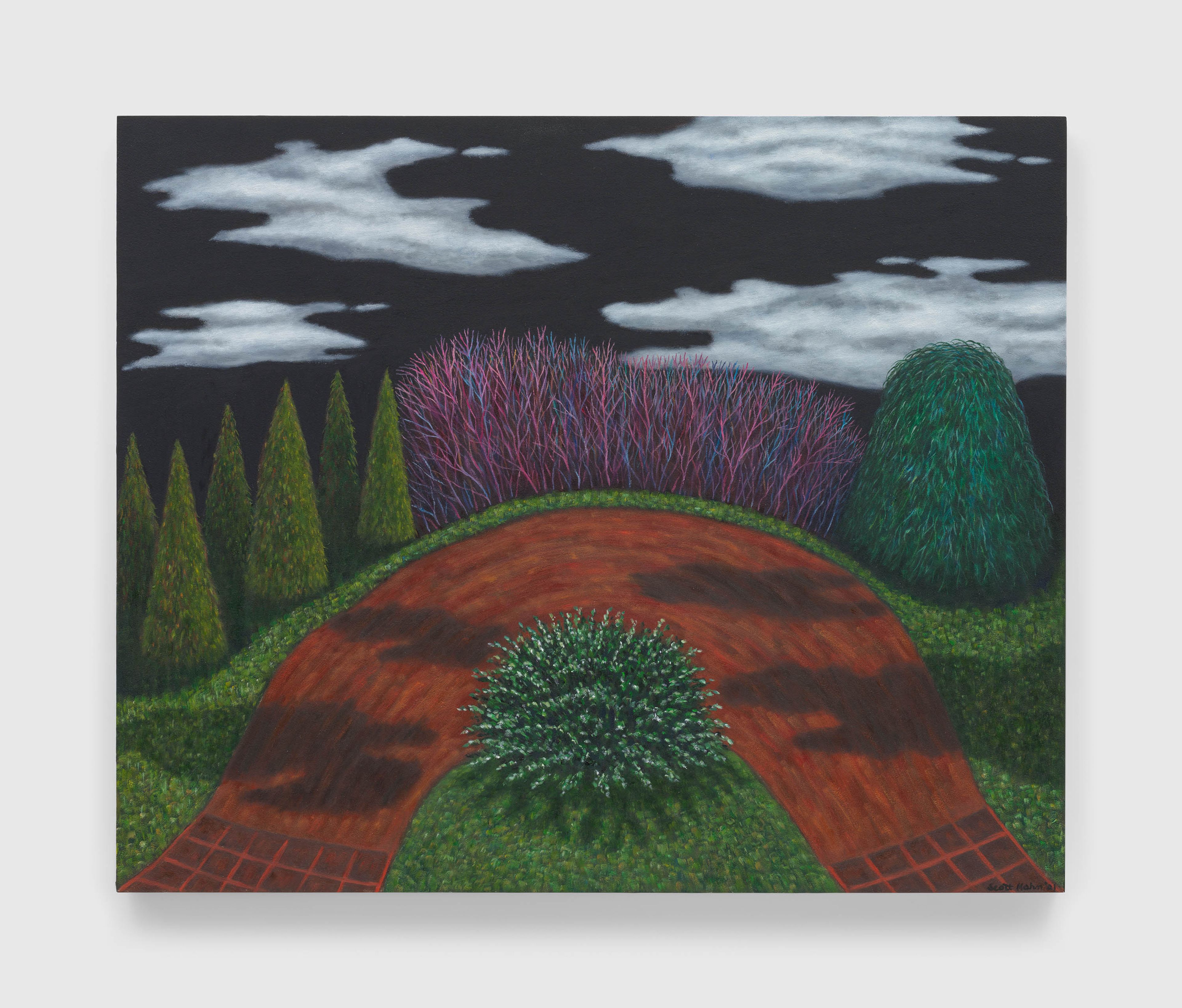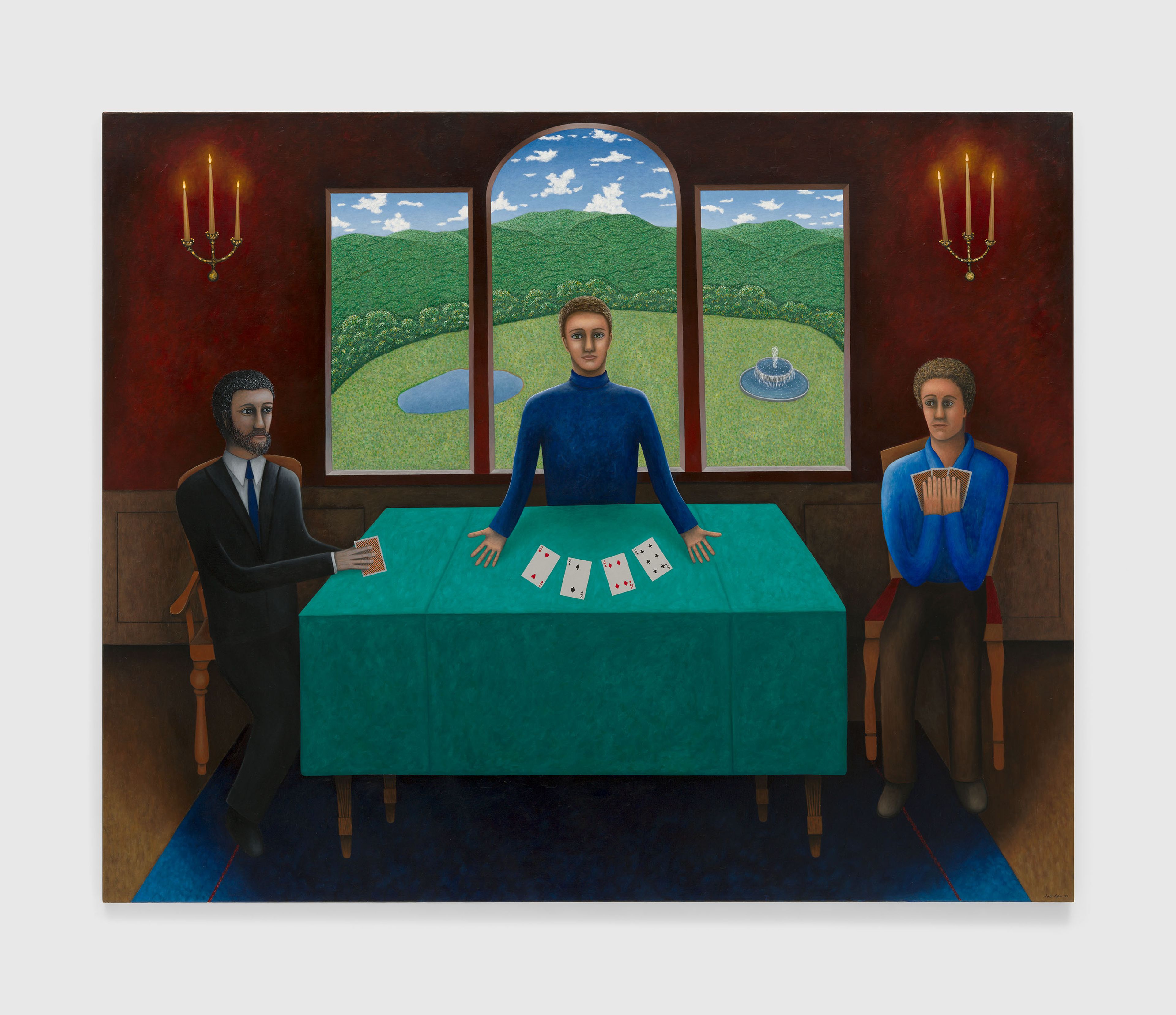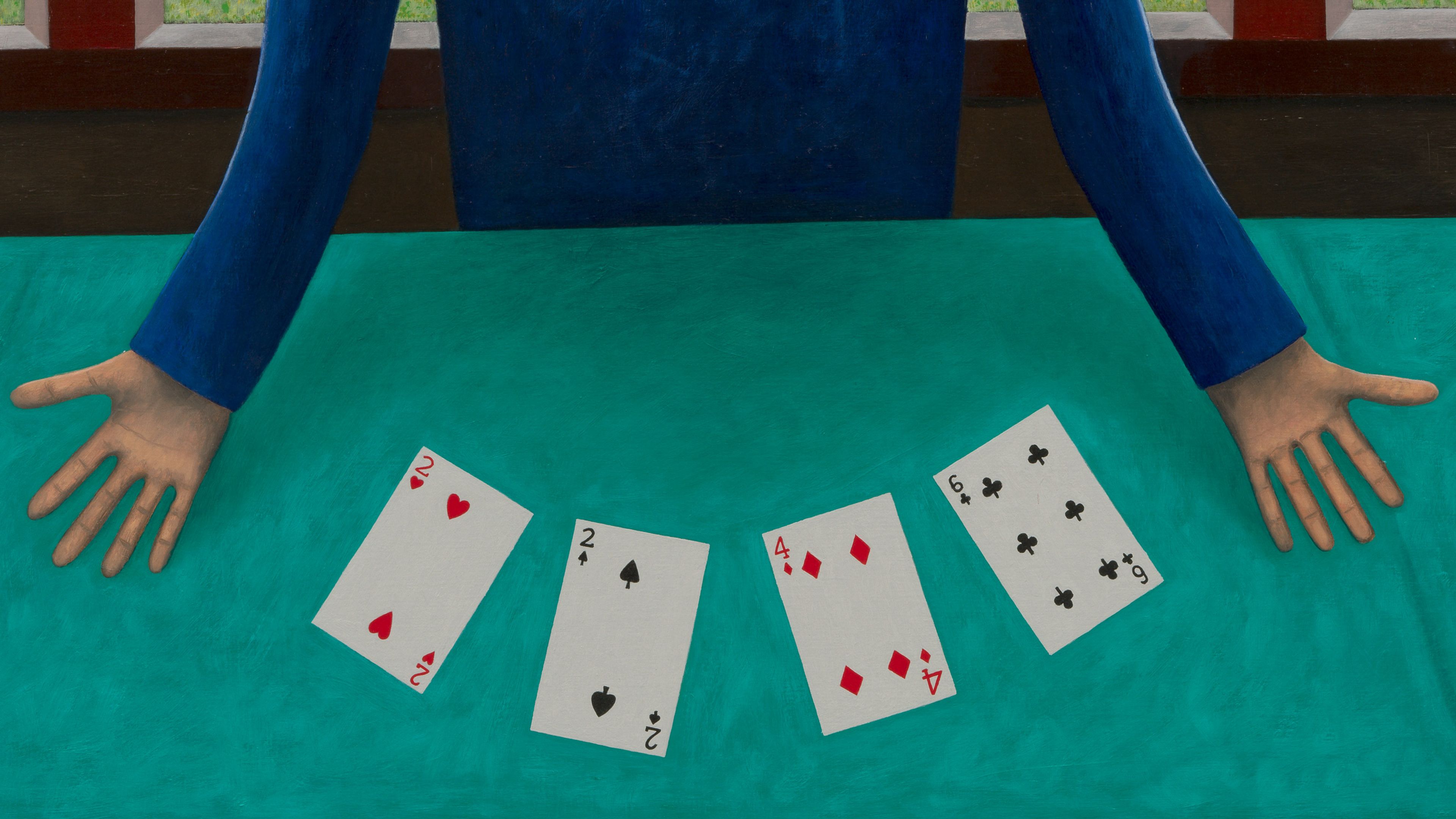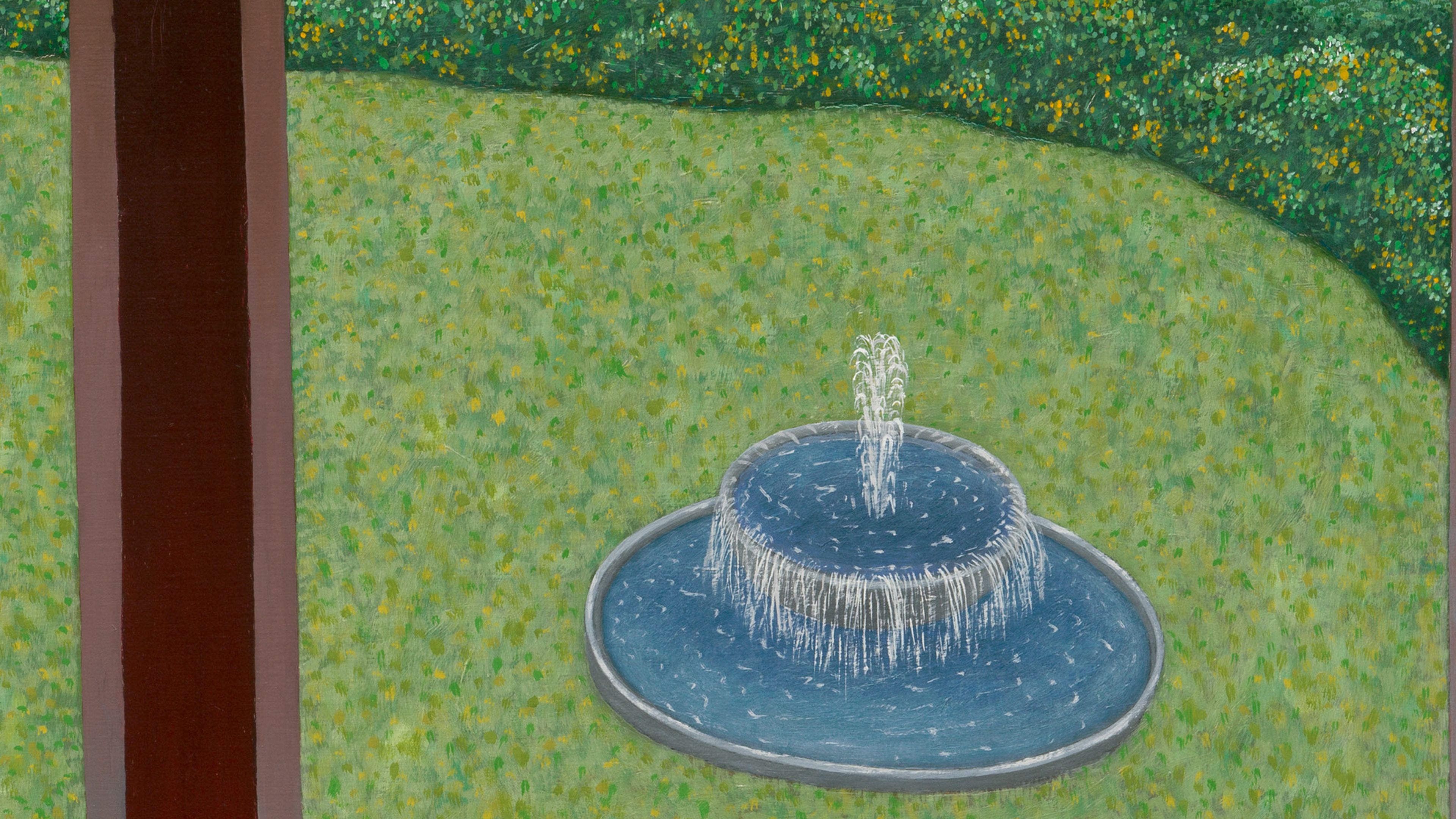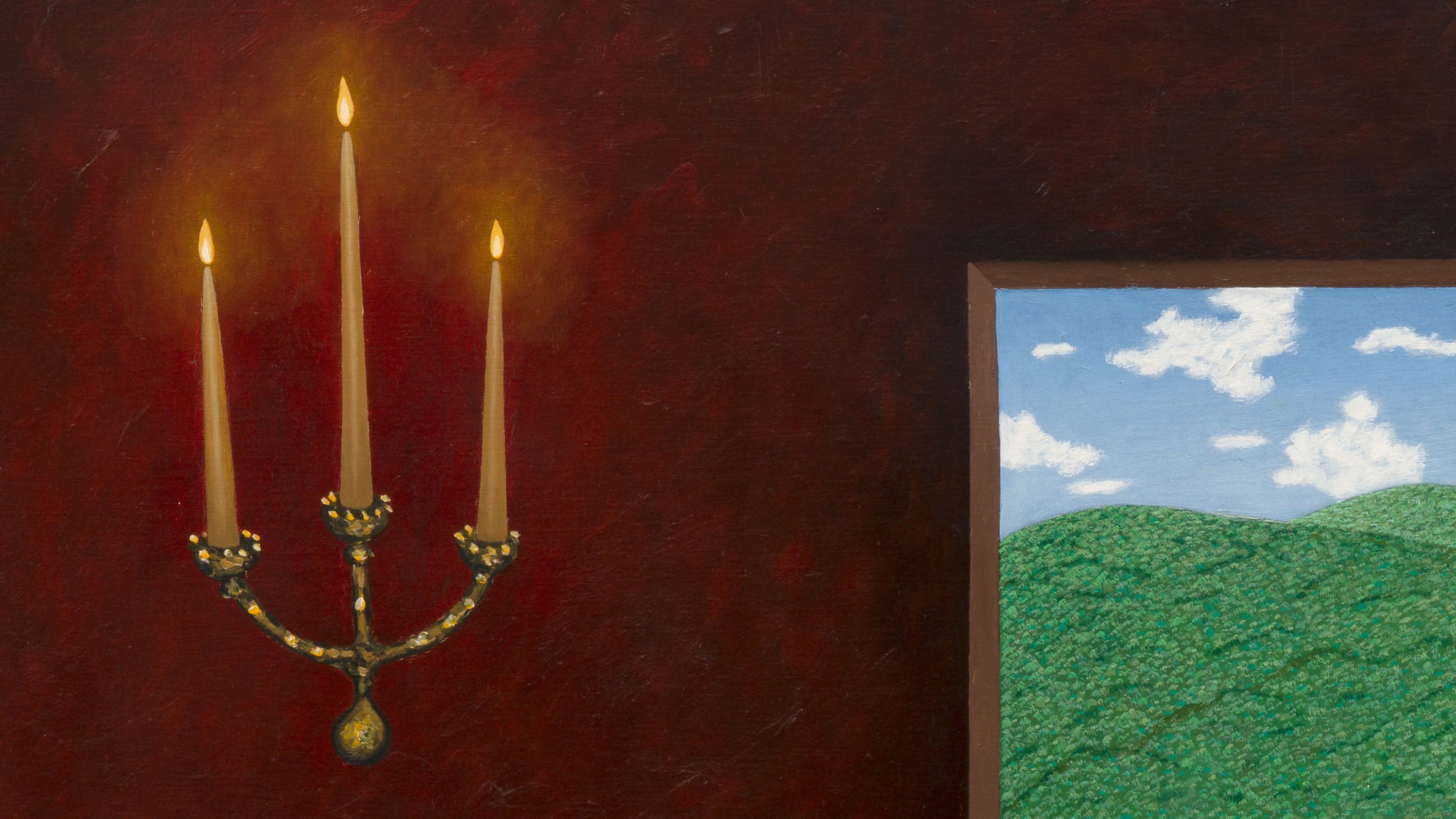Exhibition
Scott Kahn: Once in a Blue Moon
Want to know more?
Past
November 19, 2024—February 22, 2025
Opening Reception
Tuesday, November 19, 5–7 PM
Location
Hong Kong
5–6/F, H Queen’s, 80 Queen’s Road Central
Hong Kong
Tue, Wed, Thu, Fri, Sat: 11 AM-7 PM
Artist
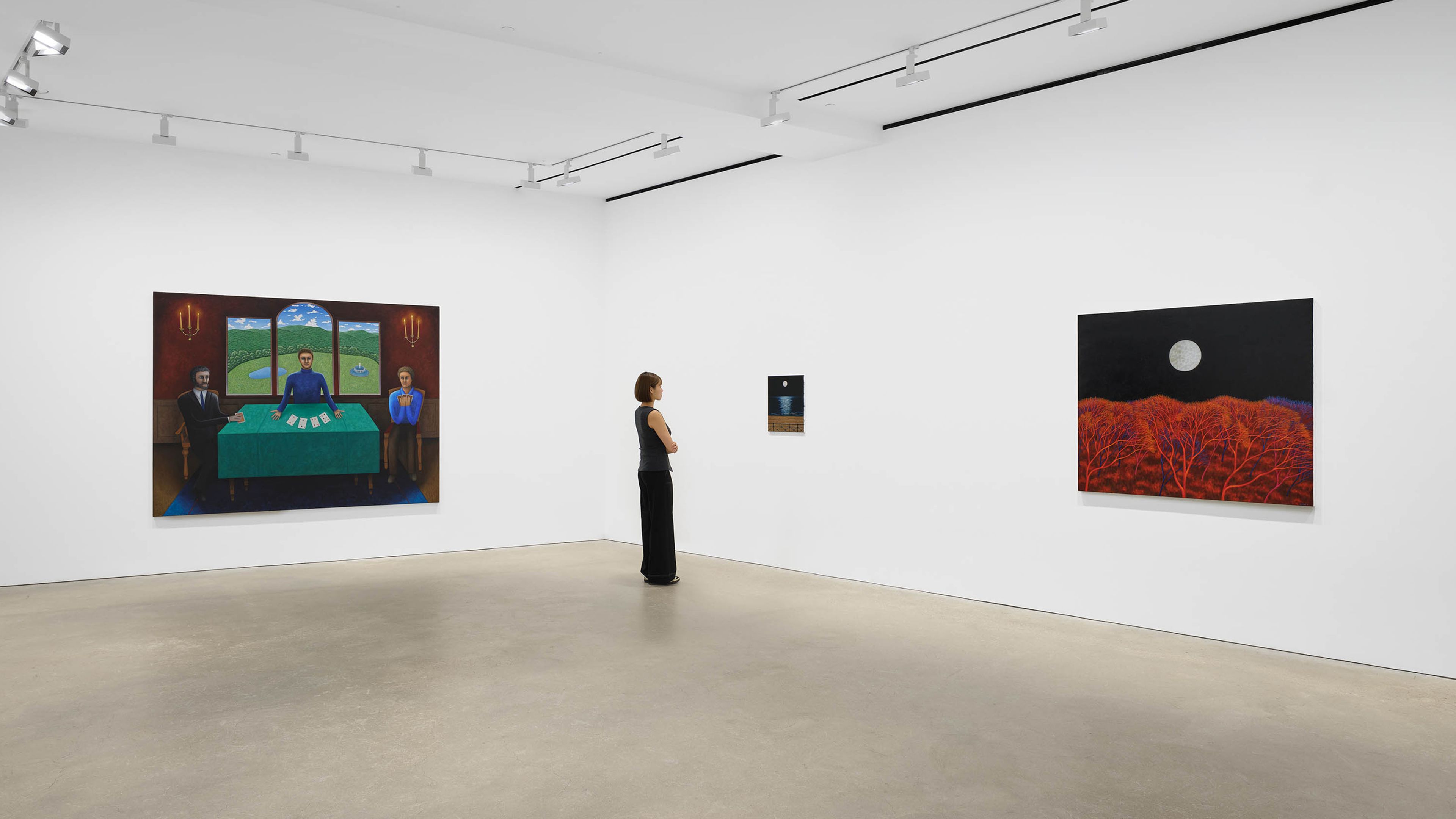
Installation view, Scott Kahn: Once in a Blue Moon, David Zwirner, Hong Kong, 2024–2025
Explore
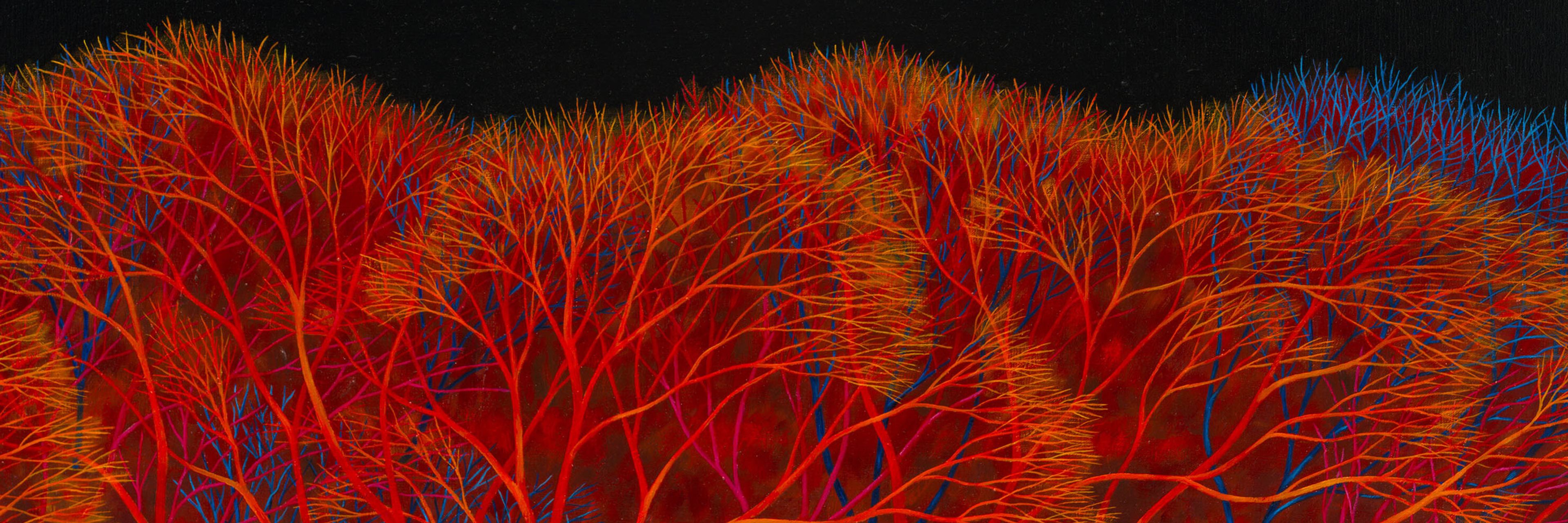
Scott Kahn: Once in a Blue Moon
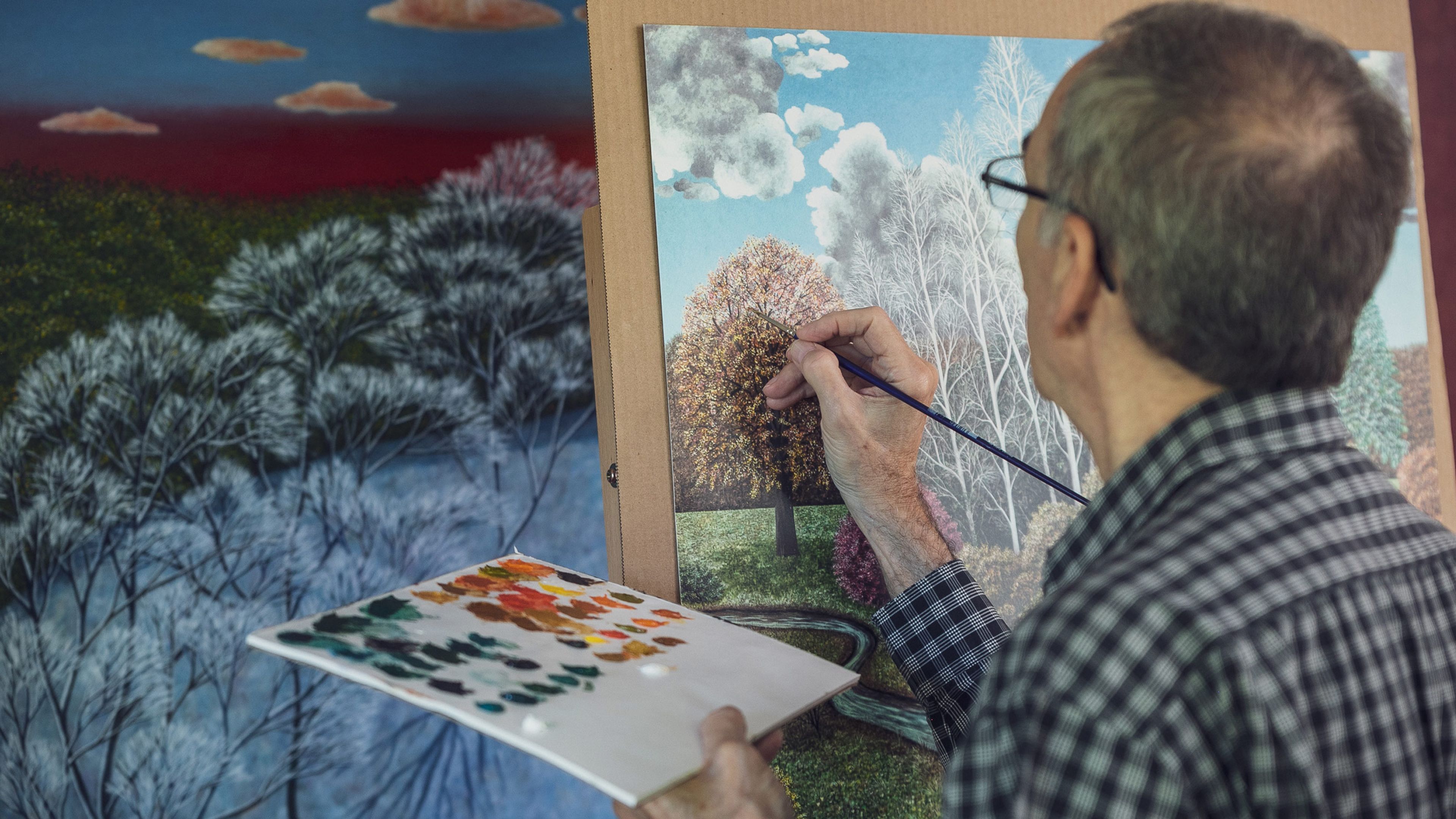
Scott Kahn, 2022. Photo by Charles Roussel
“Standing before a painting by Kahn, we begin to see ourselves seeing a world, which, despite its plethora of precise details, remains a mystery, like a beautiful box that cannot be opened up. This quality is what holds my attention, surfaces in my memory, and pulls me into the scene.”
—John Yau, “Scott Kahn’s Inimitable Views,” 2024
“I got up in the middle of the night and was struck by the beauty and peacefulness of the nearly full moon.... It made such a strong impression on me that I immediately began a large painting inspired by the memory and mood I had viewed that night.... I grouped the trees as if they were having a pas de deux with each other. The landscape became a silent ballet.”
—Scott Kahn, 2024
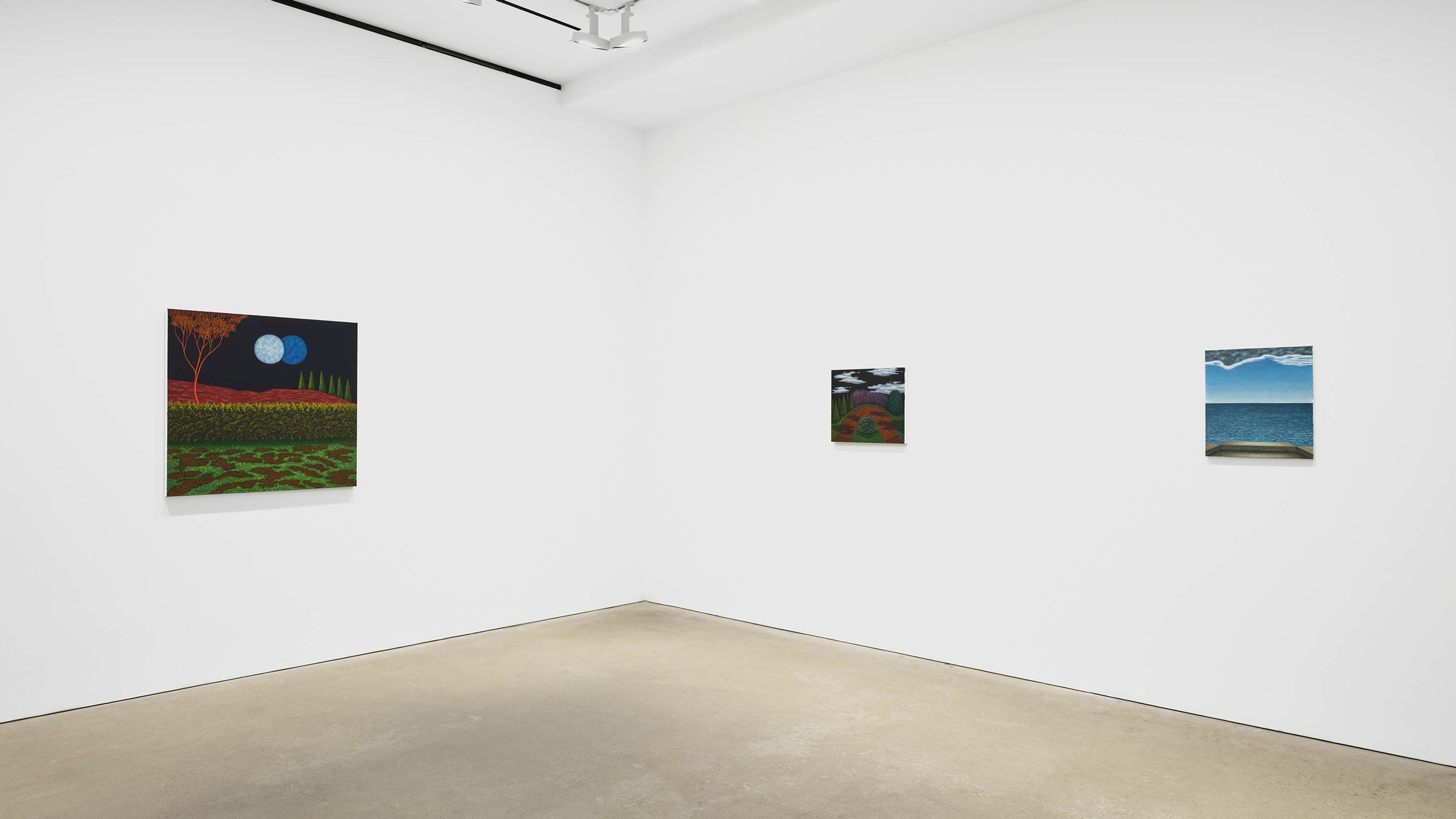
Installation view, Scott Kahn: Once in a Blue Moon, David Zwirner, Hong Kong, 2024–2025
“A black cloud (or is it a shadow?) that appears to be moving from left to right.... With its palm and fingerlike appendages, the black shape resembles a hand. Once we make this association, we can neither get it out of our mind, nor can we decipher its meaning. This resistance to narrative is remarkable considering the view is crystalline in its specificity.”
—John Yau, “Scott Kahn’s Inimitable Views,” 2024
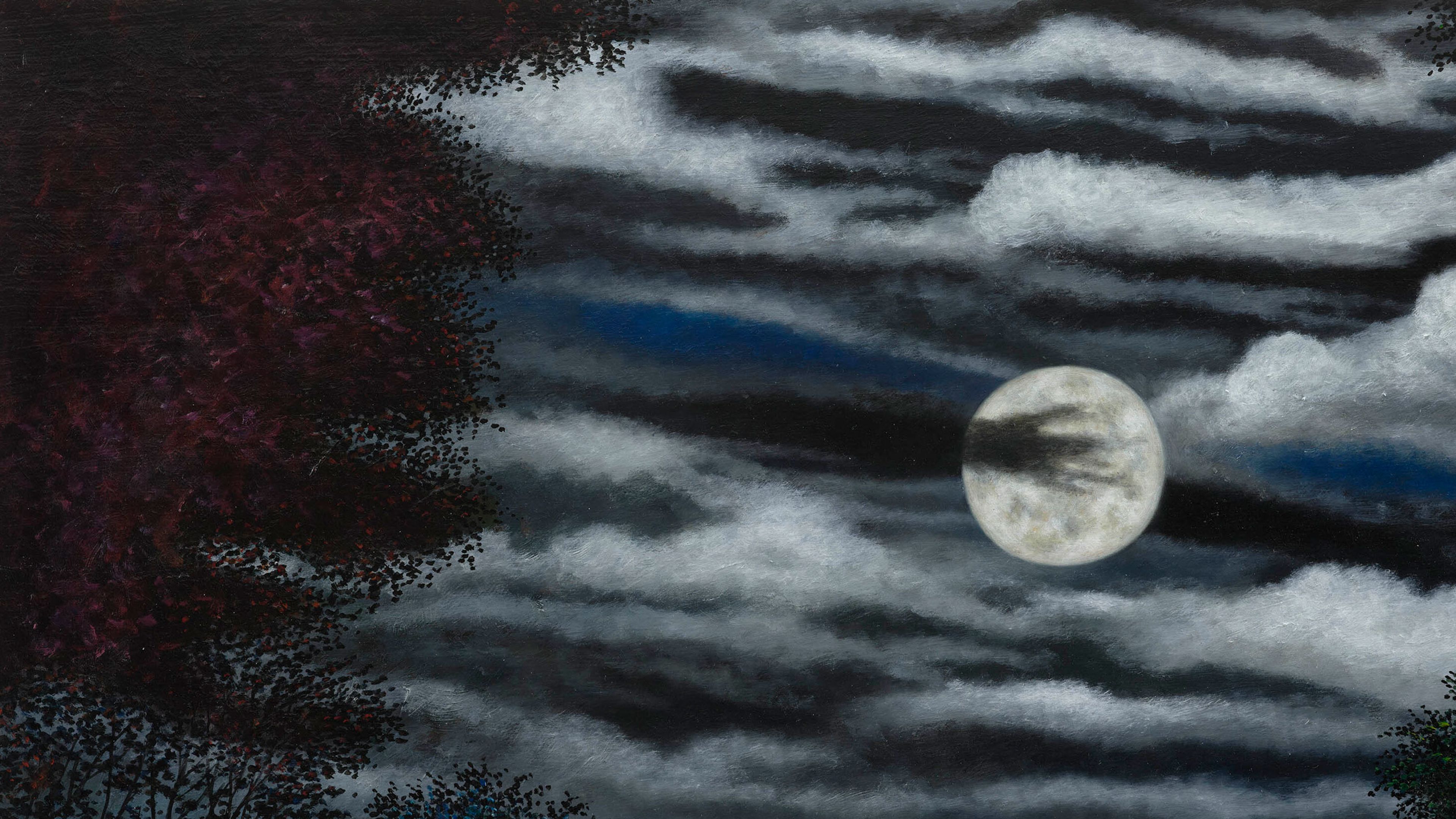
Scott Kahn, Spring Moon, 2013 (detail)
“Paintings like [Kahn’s] elude interpretation, not merely by their willful narrative ambiguity, but by a clarity of vision that approaches silence. In his quixotic insistence on cutting through the fog of feeling, Kahn finds unusual mystery.”
—Andrew L. Shea, The Brooklyn Rail, 2022
“Here are what could almost be stage sets for fables and fantasies of childlike wonder. But, here too, are the sophistication and quiet savagery of experience we feel certain it must take to achieve Kahn's masterly balance between revery and anxiety, color and calm, the ordinary and the otherworldly.”
—Tom Healy, poet
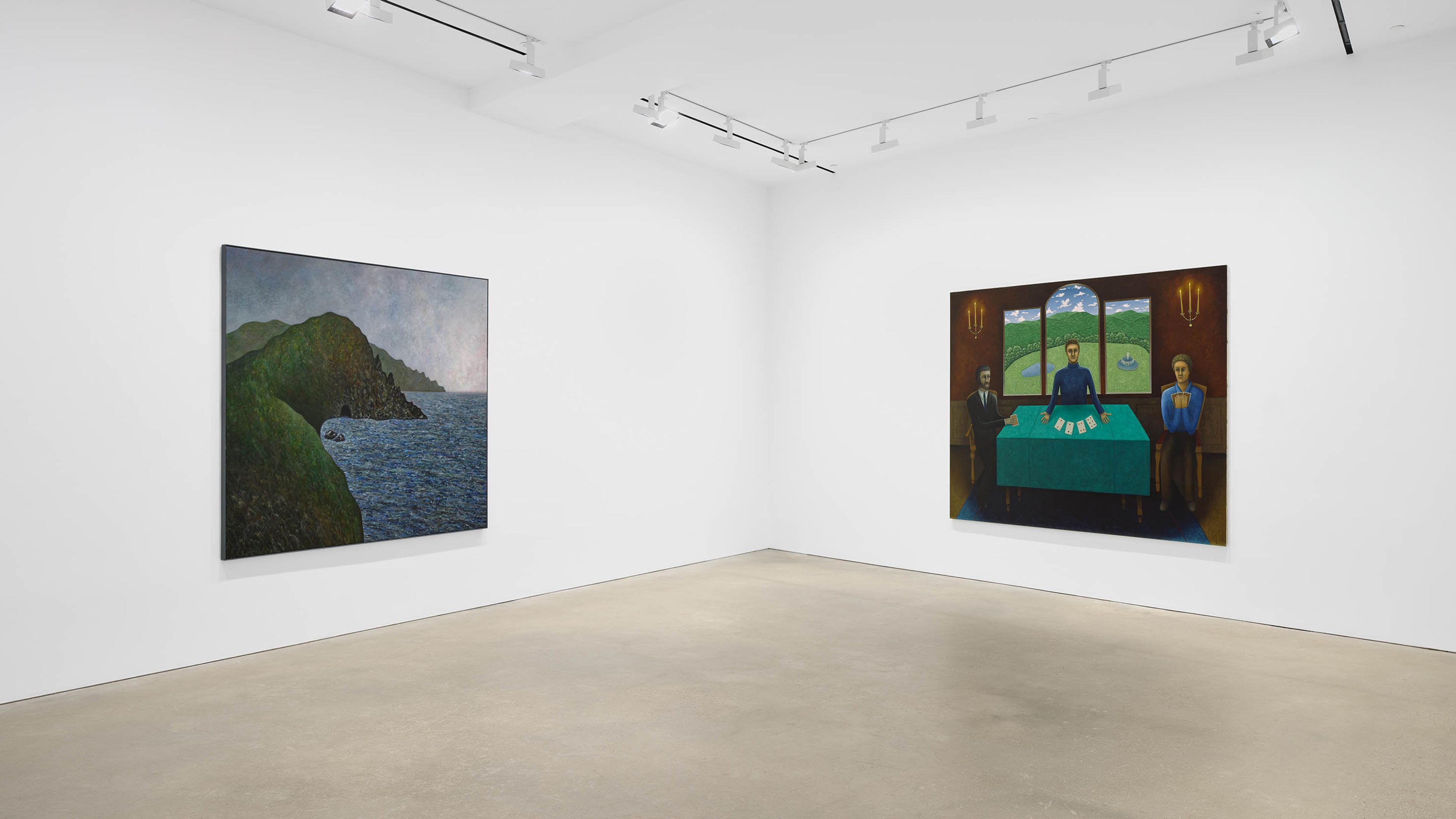
Installation view, Scott Kahn: Once in a Blue Moon, David Zwirner, Hong Kong, 2024–2025

Inquire about works by Scott Kahn
